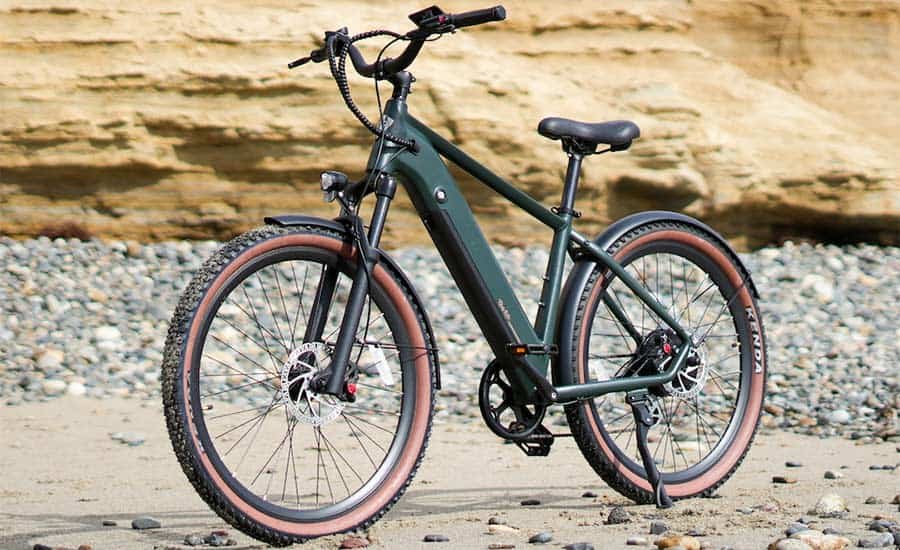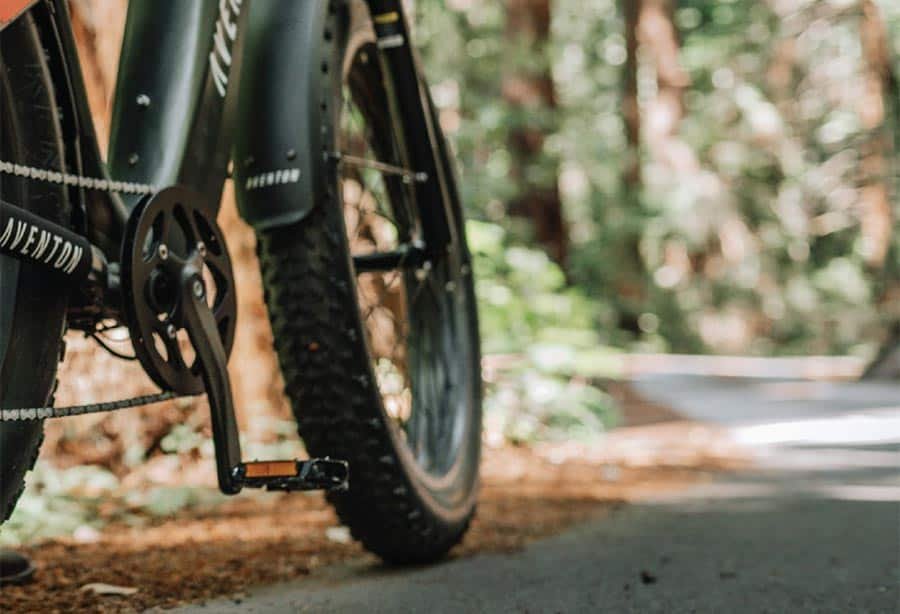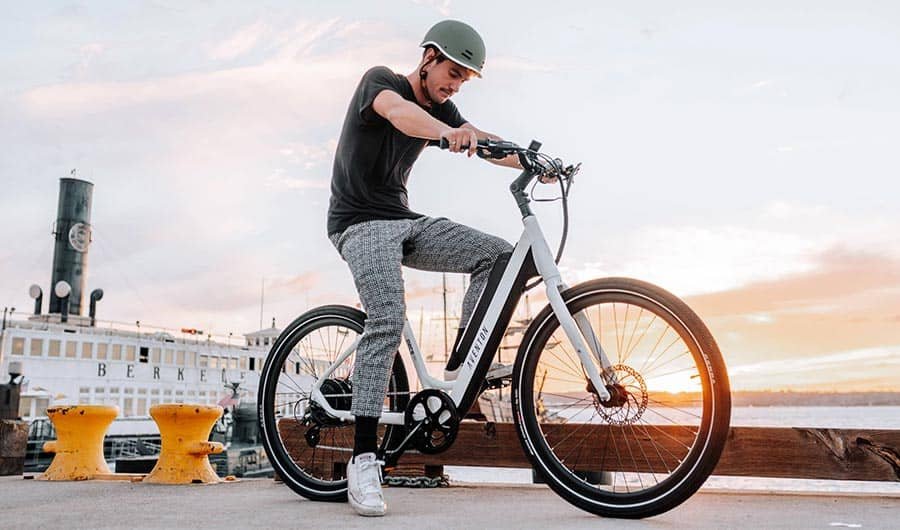Do you ever find yourself dreading your daily commute on a bike because of those pesky hills or longer distances? You’re definitely not alone! In fact, with over 51 million people in the US taking to their bikes for fun or transportation in 2021, it’s a common problem that many people face.

But what if we told you there’s a game-changer that could make your rides effortless and enjoyable? Say hello to the electric bike, or e-bike, a revolutionary mode of transportation quickly becoming a popular choice for people worldwide. In this post, we’ll explore what e-bikes are and why they significantly impact how we get around.
What is an Electric Bike?

Have you ever dreamed of gliding effortlessly through the countryside or breezing past traffic on your daily commute? Well, that dream can now become a reality with electric bikes, or e-bikes for short!
An e-bike is like a regular bicycle with a helping hand from a little electric motor. It makes tackling hills and strong headwinds a breeze and lets you go the extra mile without as much effort. You still get to enjoy a good workout, but the motor takes care of some of the heavy lifting for you.
Think about it; e-bikes offer the best of both worlds – the freedom of cycling and the convenience of a motor. And with their growing popularity, it’s clear that people are catching on to the benefits. So whether you’re a commuting professional, a weekend adventurer, or just someone that’s looking for a sustainable mode of transportation, e-bikes have something to offer everyone.
But e-bikes aren’t just a trend – they’re here to stay. Cities and countries worldwide are investing in e-bike infrastructure, such as dedicated bike lanes and charging stations, making it even easier to switch to an e-bike. And with technological advancements, e-bikes are becoming more reliable and user-friendly daily.
So, don’t let hills or far distances hold you back anymore! An e-bike could be the game-changer you never knew you needed. With that said, let’s explore the world of e-bikes together!
How Electric Bikes Work
E-bikes are equipped with an electric motor powered by a rechargeable battery. For example, in pedelecs or pedal electric cycles, when you pedal, the motor kicks in and provides extra power; you can choose how much assistance you get from the engine, often by adjusting a dial on the handlebars. Moreover, you still get a workout because you still have to pedal!
What makes e-bikes even more extraordinary is the technology behind them. Most e-bikes have a sensor that measures the force you apply to the pedals. The harder you pedal, the more help you get from the motor. And, of course, e-bikes display speed, distance, and how much juice is left in the battery.
Another great thing about e-bikes is that there are various styles to choose from. For example, there are models with smaller motors and more compact batteries if you’re looking for an e-bike for commuting or leisurely rides. And if you’re an adrenaline junkie who loves off-road adventures, there are e-bikes with larger motors and long-range batteries that are designed for more brutal terrain.
How Does Pedal Assist Work?

Electric bikes have a unique feature known as pedal assist which makes riding an almost effortless experience. If you’re unfamiliar with this term, let me explain it to you.
At its core, pedal assist is a simple concept. The bike is equipped with an electric motor powered by a rechargeable battery. As you pedal, the motor kicks in to give you a boost and make the ride much more convenient.
The best part? You get to control how much help you get from the motor. Most e-bikes have sensors that detect how hard you’re pedaling (or how fast you’re turning the cranks). The motor then provides assistance based on these pulses. You can adjust the level of assistance using a simple dial on the handlebars.
Now, imagine you’re riding up a steep hill or facing a strong headwind. With pedal assist, those challenges become much easier to tackle. And don’t worry; you still get a workout – the motor just takes some of the strain off.
So, that’s pedal assist in a nutshell. It’s what makes electric bikes so user-friendly and accessible. With advanced technology making e-bikes more and more advanced, they’re becoming a fantastic option for anyone looking for a sustainable mode of transportation.
Different Classes of Electric Bikes

Class 1: Pedal-Assist Only
These e-bikes provide a helping hand when you need it but still allow you to do the pedaling yourself. The electric assist kicks in as soon as you pedal and stops when you reach 20 miles per hour. If you’re looking for a bike that gives you a workout while still making your ride a little easier, Class 1 is a great choice. Plus, if you’re commuting or running errands, the electric assist can be a lifesaver!
Class 2: Throttle Control
A Class 2 e-bike also known as a throttle-assist electric bike, is a type of electric bike that is equipped with a throttle that allows the rider to control the speed of the bike without pedaling. The throttle is powered by a rechargeable battery, and the rider can use it to control the speed of the bike without pedaling.
Unlike Class 1 electric bikes, throttle-assist electric bikes do not require the rider to pedal, and the motor can operate the bike even when the rider is not pedaling. They are popular for commuting, recreation, and leisure activities. However, they are limited to a maximum speed of 20 miles per hour, and the motor must stop assisting the rider once the bike reaches this speed.
Class 3: Speed Pedelec
For thrill-seekers, Class 3 e-bikes are the way to go! With a top speed of 28 miles per hour, you’ll be covering ground in no time. In addition, these bikes provide the most assistance of all the classes, so if you want to get to work or go for a ride without having to do much of the pedaling yourself, Class 3 is the one for you.
What is the Difference Between an Electric Bike and a Normal Bike?

How does an electric bike differ from a regular bike? Let’s dive into the details.
The Power Behind the Ride
The power source is the most obvious distinction between an electric bike and a regular bike. Traditional bikes rely solely on the rider to pedal and generate power, whereas electric bikes have a battery and electric motor that work with the rider to provide a smooth and effortless ride. With an electric bike, hills, headwinds, and longer distances are no longer a challenge.
Taking Control
Another difference between the two is the level of control you have while riding. With a regular bike, you have complete control over the speed and power, and it’s all up to you to get to where you’re going. On an electric bike, you can choose how much electric assistance you receive, which can be adjusted according to your needs and preferences.
The Cost of Convenience
Regarding cost, electric bikes tend to be pricier than regular bikes, but they offer a lot more versatility and ease of use. Plus, you’ll save money on gas, parking, and maintenance costs in the long run.
Is It Harder to Pedal an Electric Bike?

Is it harder to pedal an electric bike? This is a question that many folks are pondering as they consider making the switch to these high-tech two-wheelers. But the answer to this question isn’t quite so black and white.
For starters, let’s talk about what electric bikes are all about. These bikes have a little motor that gives you a helping hand as you pedal. This can make cycling so much easier, especially for those who struggle with pedaling traditional bikes. For example, hills and headwinds will feel relatively easy, and you’ll be able to cover greater distances without feeling as exhausted.
But, here’s the thing, the higher you go with the pedal assist level, the more power you get with each turn of the pedals. So, in essence, pedaling becomes easier as you increase the pedal assist level.
So, is it harder to pedal an electric bike? It all comes down to personal preference and individual circumstances. For some folks, electric bikes are a breeze to pedal, while others may prefer the traditional feel of a non-electric bike.
What Are the Pros and Cons of Electric Bikes?
Pros of Electric Bikes
🟩 Accessibility: Electric bikes can provide a practical solution for those who face mobility challenges, such as the elderly or those with disabilities
🟩 Versatility: Electric bikes can be used for a variety of purposes, including commuting, recreation, and leisure activities, making them a versatile mode of transportation.
🟩 Environmentally Friendly: E-bikes are a clean and sustainable mode of transportation, reducing our dependence on fossil fuels and minimizing our carbon footprint.
Cons of Electric Bikes
🟥 Cost: E-bikes can be significantly more expensive than traditional bicycles.
🟥 Weight: They can also be heavy and bulky, making them less convenient to transport and store.
🟥 Limited Range: Most e-bikes have a limited distance that they can cover on a single charge.
🟥 Maintenance: The battery and motor components can be complex and require specialized repairs, which can be expensive and time-consuming.
Do I Need a License to Ride One?

The answer to this one depends on where you live and the laws in your area. Let’s break it down for you.
Electric bikes are treated like regular bikes in some places, and you don’t need special papers to ride one. But in some other areas, they are considered motor vehicles, and you may need a license or permit to ride one on public roads.
For example, in the United States, electric bikes are categorized into three classes: Class 1, Class 2, and Class 3. Classes 1 and 2 are treated like traditional bikes, so you don’t need a license or permit. But if you have a Class 3 electric bike equipped with a throttle and can reach higher speeds, you may need a license or permit in certain states.
In Europe, the laws differ from country to country, but many European countries see electric bikes as traditional bikes and don’t require a license or permit. However, in some countries, electric bikes that can go over 25 km/h may need a license or permit.
In Canada, electric bikes are viewed as bicycles, so you don’t need a license or permit as long as your bike meets specific criteria, such as having a maximum power output of 500 watts and a maximum speed of 32 km/h.
So, what’s the bottom line? Before you hop on your electric bike, it’s a good idea to check the laws in your area to ensure you’re riding legally. You can find this information on local government websites, cycling organizations, or bike shops.
Choosing the Right Electric Bike for You

With so many options on the market, it can take time to figure out which one is right for you. But don’t stress; we’re here to help make the process easier!
First, ask yourself what you plan on using your e-bike for. Will it be your daily commuter, weekend ride, or off-road adventure machine? Different e-bikes are designed for various purposes, so figuring this out first will help you narrow down your options.
Next, let’s talk budget. E-bikes come in a wide range of prices, from more budget-friendly options to high-end models. Decide on your budget before you start shopping and stick to it, so you don’t get tempted by e-bikes that may be outside your budget.
You’ll also want to consider the range and speed of the e-bike. Some e-bikes have a limited range, making them better suited for short trips, while others can go the distance and provide more speed. Think about what you need and choose an e-bike with a range and speed that fits your lifestyle.
Another vital factor to keep in mind is the weight of the e-bike. If you plan to carry your e-bike on public transportation or store it in a compact space, you’ll want to choose a lighter option.
Finally, make sure to think about maintenance and upkeep. Look for models with low-maintenance components and reliable batteries, and consider the cost of any replacement parts or repairs you may need down the road.
FAQs
What is an electric bike?
An electric bike is simply a bicycle powered by an electric motor and a rechargeable battery.
How does an electric bike function?
An electric bike assists the rider while they pedal, making it easier and faster to travel. So, you can get where you’re going with less physical effort!
Can I ride an electric bike without electric assistance?
Electric bikes are regular bicycles equipped with an electric drive system! You can ride an electric bike just like a regular bicycle, without electric assistance.
How far can I go on an electric bike?
The distance you can travel on an electric bike depends on factors like battery capacity, terrain, and weight. On average, most electric bikes can go between 20-60 miles on a single charge.
Is it legal to ride an electric bike on the road?
The legality of riding an electric bike on the road can vary depending on where you are. In some areas, they’re classified as bicycles and are allowed on roads. But in others, there may be specific restrictions. So, it’s always a good idea to check your local regulations.
